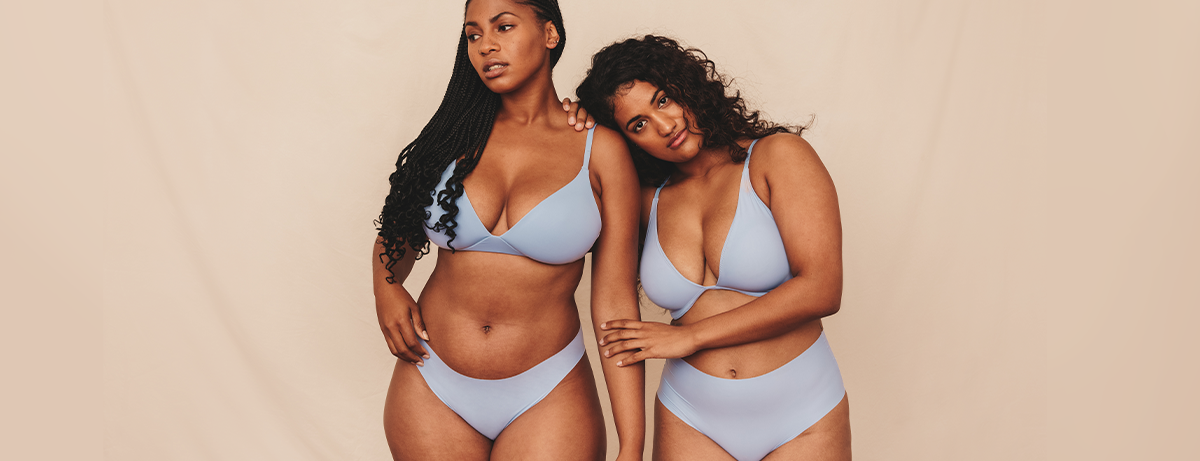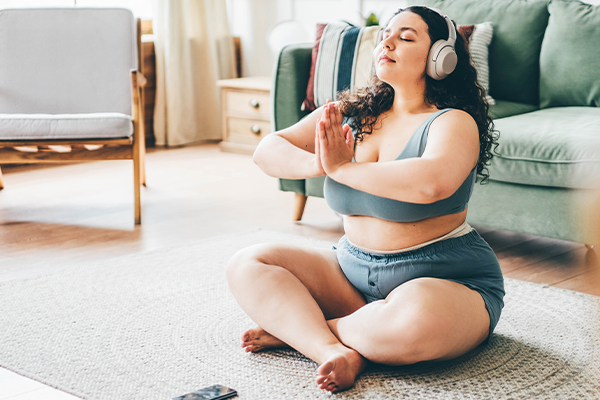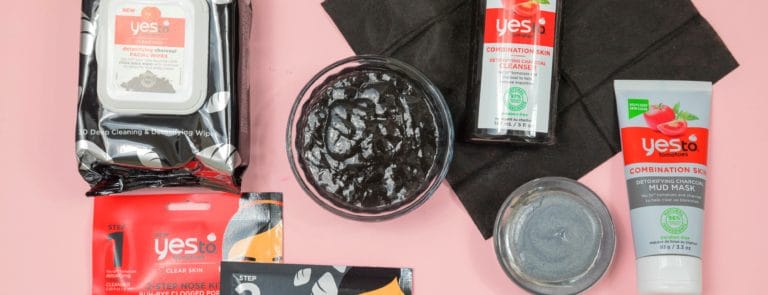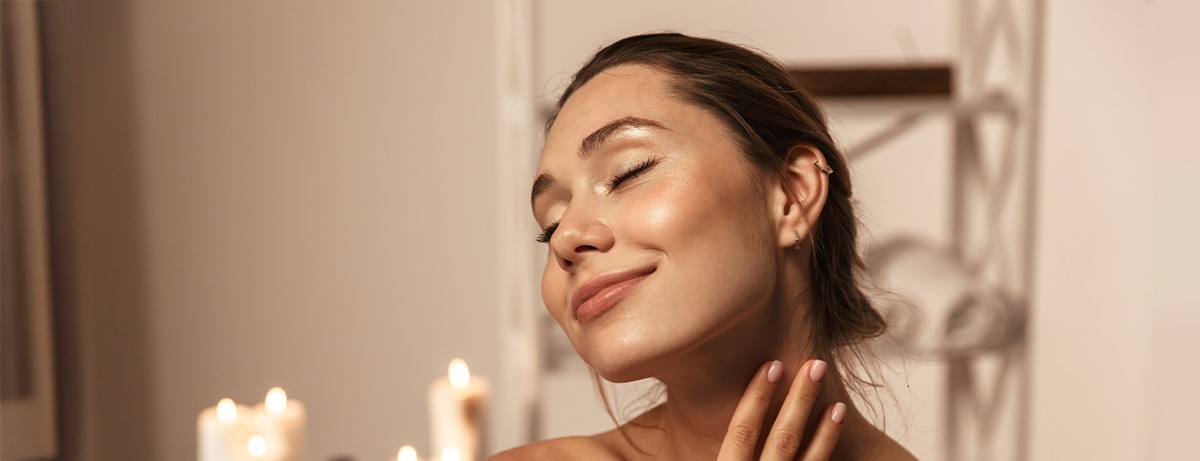15% off £25 or 20% off £35
Code:BASKET
Understanding cellulite: causes, myths and fact

What's the deal with cellulite? Uncover the facts, explore treatments and bust the myths in our must-read guide
Summary
1What’s cellulite?
Cellulite’s a skin condition that can cause skin to look lumpy, dimpled and uneven…
2How to improve the appearance of cellulite
Many people choose to accept their cellulite as part of them, but if you’re self-conscious about...
3Cellulite myths and facts
There’s no shortage of 'facts' about cellulite, but let’s separate the truth from the myths…
Cellulite: it’s a regular feature in glossy magazines. But what actually is it, and why does it happen?
It’s not harmful, so you don’t need to do anything about it. But if it’s affecting your confidence, there are some ways to help smooth things over. Let’s tackle the cellulite chatter as a team: the real science, the not-so-true stories and the steps you can take to feel more comfortable in your own skin.
What’s cellulite?
Cellulite’s a skin condition that can cause skin to look lumpy, dimpled and uneven.
While it can make some people feel self-conscious, cellulite’s very common, affecting 85–90% of women (and some men too, though it’s less usual).2
Not all cellulite looks the same. It can range from a few small dimples to lots of large indentations that may even be painful.2
How does cellulite form?
Cellulite happens when the normal structure of fat tissue breaks down.3 So, you’ll usually see it in areas where the body normally stores fat, like the thighs, bottom and around the hips.1
Normally, fat is stored under the skin in a honeycomb-like structure, with each ‘pocket’ containing fat.1 Strong fibres of connective tissue run between these pockets, holding everything in place.1 If the connective fibres aren’t strong enough, the fat pockets can protrude out into the skin, creating uneven texture.1
The more fat stored in these areas, the greater the strain on the connective fibres, which can make cellulite more noticeable.1 There are also theories that poor blood flow and inflammation can worsen cellulite.1
What causes cellulite?
Unfortunately, there’s no simple answer to what causes cellulite. There isn’t just one thing that definitely triggers it.
Instead, a variety of factors can contribute, including hormones, genetics, environmental factors and lifestyle choices.3
Women are much more likely to develop cellulite than men, and there are a few theories to explain this difference. The most likely reasons are linked to female hormones and variations in tissue structure.1,3
The hormone oestrogen can disrupt blood flow to the skin and fatty tissue, which can lead to tissue scarring and the development of cellulite.3 Additionally, the unique structure of women’s fatty tissue makes women more prone to cellulite formation.1
It’s not just hormones at play – lack of movement can make things worse, too. Sitting for long periods starves your thighs and bottom of oxygen, which can make cellulite stand out more.2 Smoking also tightens blood vessels, slowing circulation and allowing cellulite to take hold.4
Weight and diet are two more things to think about. Being overweight can make cellulite more noticeable.1,4 While losing weight may gradually improve its appearance, losing lots of weight quickly can make it more noticeable.4
Cutting back on saturated and trans fat, salt and alcohol in your diet can be a great place to start if you’re trying to make healthier changes.1,3,4
Cellulite is more common as you get older – most likely due to your skin getting thinner and less elastic as you age.1,4 However, the relationship is a little complicated, as older men don’t experience cellulite to the same extent as women.1
Your genes also have a big say in whether you develop cellulite and how severe it gets. For example, white women are more likely to experience cellulite than women of other races.3,5
While we don’t yet know the exact genes responsible, it’s clear that some women are simply more prone to it.3,4
But don’t worry – even if you’re genetically predisposed, there’s no need to do anything about your cellulite if it doesn’t bother you. If it does, there are still plenty of things you can do to improve its appearance.4

How to improve the appearance of cellulite
Many people choose to accept their cellulite as part of them, but if you’re self-conscious about it, some things can help make it less noticeable.
A great place to start is by tweaking your lifestyle – whether it's getting more exercise, quitting smoking or improving your diet.1,4 Certain treatments, both at home and in medical settings, might also help:
Massage is one of the oldest treatments for cellulite, and there’s evidence that 15 sessions of 30-45 minutes may improve skin appearance (at least in the short term).5 It’s an affordable home remedy that might be worth a try – use some massage oil to make things more comfortable.
There’s a huge variety of cellulite creams and oils on the market, all claiming to improve skin texture. But do they actually work? Some studies suggest that products containing retinol and/or caffeine are the most effective.6,7 However, more evidence is needed before we can crown one cellulite cream as the ultimate champion.
If cellulite’s really bothering you, you might consider more intensive treatment options like surgery, fillers or laser or shockwave therapy.4
Since these options may come with higher risks, it’s important to discuss them with a qualified healthcare professional before making any decisions.
Cellulite myths and facts
There’s no shortage of 'facts' about cellulite, but let’s separate the truth from the myths.
You may be wondering: ‘Why don’t men get cellulite?’. Although it’s not strictly true that men never get it, it’s definitely quite rare. That’s because men have more stability and structure in their fatty tissue, making them far less likely to develop cellulite.1
Yes, menopause can make cellulite worse due to changes in your blood vessels.4 But eating healthily and exercising regularly can help reduce the risk.1,4
The final say
While cellulite is common, that doesn’t mean it can’t affect your confidence. Luckily, making some improvements to your lifestyle and using the right treatments can help if you’re interested.
Want to nip dry skin in the bud, too? Check out our guide to refreshing your skin.
Disclaimer - This article provides informational advice and is not a substitute for medical care. Curated by experts for accuracy, we take great care to ensure the information is up-to-date and relevant. However, you should always consult your GP or healthcare professional before using supplements or alternative products, particularly if you have medical conditions or are under supervision.
1. Gabriel A, et al. Cellulite: Current understanding and treatment. Aesthet Surg J Open Forum. 2023;5:ojad050. https://doi.org/10.1093/asjof/ojad050
2. Young VL, DiBernardo BE. Comparison of cellulite severity scales and imaging methods. Aesthet Surg J. 2020;41(6):NP521–NP537. https://doi.org/10.1093/asj/sjaa226
3. Tokarska K, et al. Cellulite: A cosmetic or systemic issue? Contemporary views on the etiopathogenesis of cellulite. Adv Dermatol Allergol. 2018;35(5):442–6. https://doi.org/10.5114/ada.2018.77235
4. Arora G, et al. Cellulite: Presentation and management. J Cosmet Dermatol. 2022;21(4):1393–401. https://doi.org/10.1111/jocd.14815
5. Bass LS, Kaminer MS. Insights into the pathophysiology of cellulite: A review. Dermatol Surg. 2020;46:S77–S85. https://doi.org/10.1097/dss.0000000000002388
6. Roure R, et al. Evaluation of the efficacy of a topical cosmetic slimming product combining tetrahydroxypropyl ethylenediamine, caffeine, carnitine, forskolin and retinol, in vitro, ex vivo and in vivo studies. Int J Cosmet Sci. 2011;33(6):519–26. https://doi.org/10.1111/j.1468-2494.2011.00665.x
7. Dupont E, et al. An integral topical gel for cellulite reduction: Results from a double-blind, randomized, placebo-controlled evaluation of efficacy. Clin Cosmet Investig Dermatol. 2014;7:73–88. https://doi.org/10.2147/CCID.S53580












